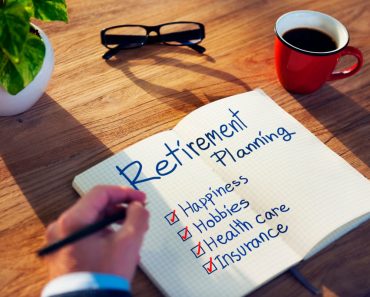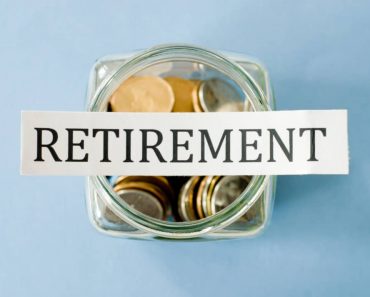
Retirement planning is the process of planning and managing your short- and long-term finances to help you achieve your financial dreams during both your working and retired years. To develop a comprehensive retirement roadmap, it involves analysing your financial objectives, current financial position and expected future cash flow.
The younger the generation, the faster they aim to withdraw from a salaried employee’s everyday life and enjoy a retired man’s luxuries. Unlike for our generation before, retirement is now much more than just sitting back and living off your monthly pension. Make sure you are withdrawing from work but not from life. This requires careful planning!
History of Retirement
Prior to the 18th century, the average life expectancy of people was between 26 and 40 years. Consequently, only a small fraction of the population was clocking an age where they become less physically fit or strong to do their regular active jobs.
There had been a long practice, beginning in the Roman empire through to the modern nation-states, of providing a pension to those who had served in the military.
According to William Osler, a prominent Canadian physician, a man’s best work was done before he was 40 years old, and he should retire by the age of 60. Sharing his conviction in his 1905 valedictory address at the Johns Hopkins Hospital, Osler described the ages between 25 and 40 years as the “15 golden years of plenty”. He said workers aged from 40 to 60 were “merely uncreative” and so were typically “tolerable”. However, “they become useless and should be put out for pasture when they’re past 60 years old”.
The concept of retirement began to gain popularity in the US after the Industrial Revolution, as many of the factory workers grew older and naturally, physically weaker. Assembly lines slowed down and application for sick days leave mounted. It was obvious ageing workers were taking up the spots of more youthful and productive workers with younger families to take care of.
The consequence was high unemployment among the youth because older, employed men were refusing to resign. The situation was further worsened by the Great Depression. Although it could be viewed as a critical adjustment, the greater number of older, working people rejected the idea of retirement.
Establishing a Retirement Plan
Retirement preparation covers all events from your first job, up to and following your retirement, geared at ensuring that you and your interests are well served in your life’s retirement process. It is important to consider the following when drawing up a retirement plan: based on an individual perspective and personal conditions, people generally will prefer to retire early, say before 50 years, while others may retire later, at only 60 years, or for as long their terms of employment permit.
The timing of your retirement will be affected by many factors including your state of health, the desire to pursue other activities and, most importantly, the level of available financial resources and responsibility. However, for some others, the timing of retirement is not entirely up to them. Accidents, ill-health and employer-distress can sometimes lead one to premature retirement.
What kind of Income you can Expect in Retirement?
After you’ve determined your retirement funding needs, it’s important to predict your revenue sources that will be available in retirement. It may consist of earnings from savings such as dividends, stock gains, or rental income. as well as insurance and other retirement payments for someone who has scheduled and planned for his retirement early enough.
Estimating your revenue streams is essential to encourage you to prepare how to fulfil your retirement living needs.
Key Takeaways
- Retirement preparation will include the evaluation of time horizons, estimate of costs, measurement of necessary after-tax returns, assessment of risk appetite and preparing of assets.
- Start the retirement plans as soon as you can to take advantage of the force of compounding interest.
- Younger investors can take more risk with their investments while investors should be more conservative closer towards retirement.
- Over the years, retirement plans evolve, meaning portfolios should be rebalanced and estate plans updated as necessary.
Start by learning the five steps each person should take to build a solid retirement plan, no matter what their age.
1. Understand the Time frame
Your present age and expected retirement age will build the basic framework for a successful retirement plan. The longer the period between today and retirement age, the higher the level of risk your portfolios will handle. You should have the majority of your assets in riskier investments, such as stocks if you are young and have 30-plus years until you retire.
Although volatility will always be present, stocks have historically outperformed other securities over long periods of time, such as bonds. The keyword here is “long,” which means at least 10 years. In fact, you should outpace inflation gains so you can maintain your purchasing power through retirement.”Inflation is something of an acorn. It starts out small but it can turn into a mighty oak tree given enough time.”
2. Determine Retirement Spending Needs
You will be able to create the required retirement portfolio if you can establish a realistic projection of your spending habits in retirement. Most people believe their annual spending after retirement amounts to only 70% to 80% of what they previously spent.
Such an assumption is often proven to be unrealistic, especially if the mortgage has not been paid off, or if there are unforeseen medical expenses. Sometimes, seniors often spend their first years splurging on vacations or other ambitions from the bucket list.
3. Calculate Investment Returns After Tax
Once the expected time horizons and expenditure requirements are determined, the real after-tax return rate must be calculated to assess the feasibility of the portfolio producing the required income. The commonly expected return rate before taxes is 10%, although typically this is an unrealistic projection, even when investing long-term. This yield drops as you mature as a low-risk equity portfolio is basically comprised of fixed-income securities with low yields.
4. Investment Goals
Whether you take full charge of your investment decisions or hire a professional manager to do it for you, creating a portfolio allocation that properly balances the investor’s risk threshold and their yield target is possibly the most important thing in retirement planning.
How much risk are you willing to take to attain your goals? Should some revenue be set aside for required expenditures in risk-free treasury bonds? You need to be sure you are confident with the chances your portfolio takes and know what’s needed and what’s a privilege. This is something that should be discussed seriously not only with your financial adviser but also with members of your family.
5. Staying on Top of Estate Planning
Estate planning is another important phase towards a well-rounded retirement programme and each component requires the expertise of different practitioners in the specific sector, such as lawyers and accountants.
Life insurance is also an important component of a succession programme and the cycle of retirement planning. Having a proper estate plan as well as life insurance coverage ensures that your assets are distributed according to your choice and that your loved ones won’t experience financial hardship after your death. Also, a carefully outlined plan helps avoid a costly and often lengthy probate process.
A further crucial part of the estate planning process is tax planning. If a person wishes to leave assets to members of the family or a charity, it is necessary to compare the tax implications of either giving the benefits or passing them through the estate process.
Finding the right balance between realistic yield projections and desired lifestyle is one of the most challenging tasks when developing a comprehensive retirement plan. A wise idea is to focus on building a stable portfolio and then periodically adjust to match changing business dynamics and retirement priorities.
When Should you Start Planning for Retirement?
In two words, right now. In three words, in your 20s. The sooner you start planning, the longer your money has to grow. That said, it is never is too late to start organising. Also if you’ve not contemplated retirement as much as you should, don’t feel like your ship has sailed. Any dollar you can save today will be enjoyed later on.
When can I Retire?
This question has lots of layers to it. The earliest you can begin claiming benefits from Social Security is age 62. Yet you will sacrifice a portion of your benefits by filing early. If you were born in 1960 or later, the full retirement age (which is also the full age of benefits for Social Security) is 67. And, if you can delay it further, your benefit will actually increase, up to age 70.
According to Gallup research, the average retirement age on record is 61 – besides the laws of social security. Of course, there are many employed people who choose to stop an active work life before that age and others who wait for a little longer. Most individuals consider it best to ease out of the workplace gradually, rather than suddenly retire.
How to Forecast a Retirement Budget
A key element in retirement planning is to forecast a retirement budget so that you can invest with a view to the end. To get a good estimate, you must use your current budget as a basis for future forecasting (after planning a lot of adjustments).
You’re going to have to deal with so many uncertainties because nobody knows what the future will bring. So, what you’re predicting is just a guide for calculating a minimum amount you need to keep in order to maintain your living standards in future years.
What are the Common and Costly Mistakes in Retirement Planning?
Again, it’s incredibly difficult for young people to consider saving for retirement at such an early age. However, most retirees note that the most regretted, frequent and expensive error they made in their retirement plans is not saving and cutting on spending early.
How Does it Feel to be Retired?
Expect to go through emotional stages There is an emotional process that most people undergo when they adjust to retirement. There is, at first, a sense of freedom. It is like you are on a holiday that will last forever. However, that sense of novelty wears off, and you settle down into a slower lifestyle.
Retirement Plans
An arrangement to provide retirement income for people when they no longer earn a steady income from employment is essential. It’s more about being your own boss than not having to rely on someone else: you can also create your own retirement plan with that provides tax advantages and probably save more each year than you can if you work for someone else.
Modelling and Limitations
Retirement finances cover distinct subject areas or financial domains of client importance, such as mutual funds, stocks and bonds investments. Others are cash flow analysis (earnings and expenditures), debts, real estate, insurance and defined benefits such as traditional pensions and social security.
From an analytical perspective, each domain can be formally characterised and modelled using a different class representation, as defined by a domain’s unique set of attributes and behaviours. Domain models require definition only at a level of abstraction necessary for decision analysis.
It’s important that domains go beyond the current state description and considers issues such as a change in dynamics, volatility and uncertainty – as planning is about the future. All of these factors pose major challenges to any claim of model certainty or predictability by any current producer.
Monte Carlo method
The Monte Carlo method is the most popular mathematical model used to predict how a client’s retirement savings investment will behave in the long term. It’s a good tool for spotting gaps and flaws in a client’s retirement planning investment strategy, so they can make necessary adjustments and be clear on strategic choices and actions.
However, the investment domain is incomplete as it is only a financial domain. Depending on a client’s needs or interest, the investment domain may have just very little significance in terms of a client’s other domains, for example, a client who’s major inclination is on pooling their retirement fund from real estate investment.
Personal Planning
- Decide on the level of activity you’ll want to engage in after retirement. You may want to do contract work or take in a part-time engagement or other job types that don’t strain you.
- Mentally get yourself ready and think about taking on hobbies and developing new post-active work life.
- Learn to value leisure time more, create a work-life balance and learn to say no.
- Prepare your working environment.
- Plan and prepare for the transition impact of retirement with home life.
- Stay connected with the community.
Obtaining a Financial Plan
Producers such as a financial planner or financial adviser can help to build smart retirement plans for clients, with compensation paid in the form of fees or being commission-based on the volume of product sale. However, this relationship type is sometimes considered to be conflicting with the client’s interest and advice offered may be prone to bias or at a cost that doesn’t justify its value.
Clients may also want to take a DIY route, and find useful web resources and tools like a mathematical model, calculator and decision support system. In that sense, an online tool that helps to properly guide the client to plan well with little or no intervention by other people could be classified as a producer. Many of the same argument for lean manufacturing provide key motivations of the DIY trend, which is a creative change in the relationship between producer and consumer.
The Industrial Revolution in America
In Germany, Chancellor Otto von Bismarck, faced with the rising challenge of marxism, proposed in 1883 that government pay pensions to every working German over the age of 65. Although that sounded generous, in the 1880s hardly anyone lived up to 65, with many people suffering from injury or illness long before that point. However, his actions have led to the de facto retirement age that remains at 65 today.
Although retirement was very rare in a private business at the turn of the 20th century, military pensions had been given to disabled and decorated war veterans for many years. Nevertheless, early 1900’s pension information indicates that many members of the army who earned government pensions prefered to leave rather than work.
It wasn’t until a medical retirement resource was established that the term began to gain popularity. The Industrial Revolution changed the face of labour in the US dramatically as workers left their farms for jobs in the region. The need for decent wages and income stability came with this new labour force because workers did not have the physical resources of the farm to support them but had to simply sell their physical and mental abilities. The increasing workload needs of the factories have since greatly separated older and younger workers, with the older workers often unable to sustain the speed of the machinery and conveying belts.
The railway company American Express became the first large corporation to propose a private pension scheme in 1875. Banks and production firms followed suit and started to give workers the recruitment and retention of talent for corporate pension plans.
The Growth of Private Pensions
However, the elderly still didn’t want to retire, even with their financial security assured. A Labor Force Participation Rate analysis showed that by the 1940s, more than 50% of men over the age of 65 were still working. The wealthy first discovered the life of leisure and retirement communities started to emerge in the 1920s and 1930s, as the number of golf courses increased.
Technological advances such as television and highway networks have helped to bring the concept of leisure to national consciences. And with the time of plenty that followed the end of World War II, Americans were able to afford to relax and enjoy their newfound wealth. Labour Force Participation Rates showed a change in attitude to leisure, with the number falling sharply between the 1950s and 1980s when just 24% of men over 65 were still working.
In the 1960s and 1970s, the federal government started to pass legislation to control private benefits and provide employers with tax incentives to provide retirement plans. Since the early 1960s, self-employed employees have been able to set up “Keogh” programmes – retirement funds close to those provided by corporate pension schemes.
To further create equal opportunities for self-employed individuals, the Individual Retirement Accounts (IRA) was established by the Employee Retirement Income Security Act (ERISA) of 1974 to enable those who don’t have private pension funds to be able to invest in a qualified plan.
ERISA has also helped to maintain the stability of the retirement accounts and to shield them from insolvency. With the ERISA regulations, business owners are required to separate retirement accounts and protect them from emergencies that may affect solvency.
SEPs – Simple and Good?
Simplified workplace pensions referred to as SEPs or SEP-IRAs are common pension schemes that require you to pay and subtract up to 20% of self-employment wages (25% of salary if you are an employee of your own company).
However, the percentage can be varied annually, so you can contribute lower amounts (or nothing at all) when you turn out to be starving for cash. SEPs are perfect for procrastinators, as they can be opened as late as the income tax return’s extended due date. Finally, the creation and management of SEPs are much easier than Keogh profit-sharing and pension schemes.
Do you Know About Keogh Plans?
Keogh plans are the equivalent of corporate pension programs for self-employed workers. They come in two basic flavours: profit-sharing plans and defined pension benefits. In order to get a deduction for the current tax year, the plan must be drawn up before the end of the year. Once that is done, actual contributions for the return of that year can be deferred until the extended due date.
Annual contributions to Keogh profit-sharing plans are based on a percentage of self-employment income or compensation and subject to a $42,000 ceiling. A plan document must be drafted in Year One (this may cost a couple of hundred bucks), and the IRS demands an annual report (you can probably do this yourself).
Keogh-defined benefit pension plans are designed to deliver a targeted annual retirement benefit, which can be as high as $170,000. An actuary calculates each year’s contribution, summing up to a specific amount based on several factors such as your income, target objectives, years until retirement and expected investment returns.
Yearly fees for actuary service and the necessary IRS report can get up to a couple of thousands. Besides, you are boxed into making the contribution every year. However, if you earn well and are over 50, it may be worthwhile having a defined benefit plan as it allows much bigger contributions than other types of programmes. Go with a Solo 401(k), SEP, profit-sharing Keogh if younger.
Is it Good to Save for Retirement Without an Emergency Fund?
Many people create financial targets they consider more urgent than retirement, such as paying off a student loan debt or credit card or building up an emergency fund.
However, to answer your question in abridged form: Generally, yes, you should save for retirement at the same time you’re building your emergency fund especially if you have an employer retirement plan that matches any portion of your contributions.






